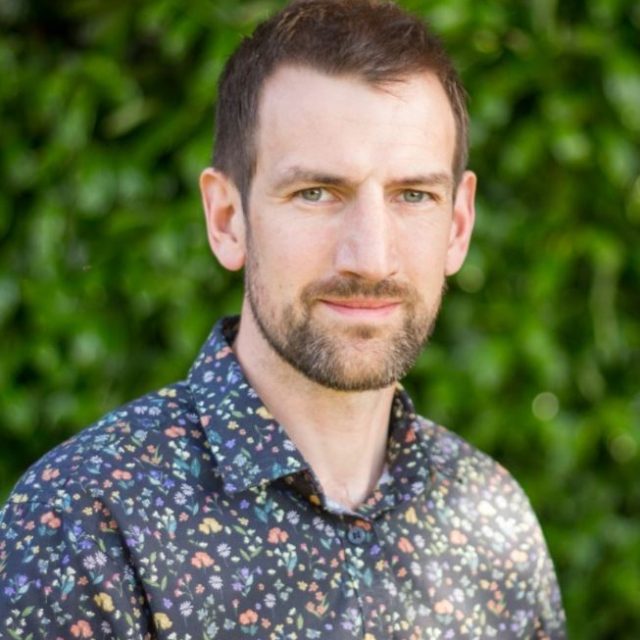News
Improving sustainability in the built environment through systems change

Expedition’s Associate Technical Innovation Engineer, Mike Sefton, shares his insight on being part of the UKGBC's transformational 'A Sustainable Built Environment Through Systems Change' programme.
The UK Green Building Council (UKGBC)’s mission is to radically improve sustainability by transforming the way the built environment is planned, designed, constructed, maintained, repurposed, and operated through its systems. They convened a wide range of industry professionals to take part in this programme to explore and initiate a change in the systems in which we work in the built environment to bring about a truly sustainable future.
Kicking off with a two-day conference in October 2023, five key areas critical to the built environment emerged for further exploration:
- Purpose of the built environment
- Finance & investment
- Voices, collaboration & relationships
- Materials ecosystems
- Power, leadership & behaviours
Members split into fractal groups to dig deeper into these areas of systems change over the six-month period – carrying out experiments and reaching out to their networks to establish different perspectives across the focus areas.
Tasked with exploring the purpose of the built environment, Mike worked with a team of industry professionals from JLL, Mace, Black Architecture, JTP LLP, Troup Bywaters + Anders LLP, Gensler, Acclaro Advisory, London Legacy Development Corporation, XCO2, and DLUHC to reach out to professionals across the construction industry and seek their understanding of and the opportunities that thinking at a systems level can provide.
Engaging opportunity
By engaging with land agents, real estate investors, contractors, architects, structural engineers, active travel project managers, circular building fit-out project managers, engineering university lecturers, community housing developers, and small-scale residential builders, it emerged that four key ‘purpose’ levels could be distinguished for the built environment, varying on where the system is viewed from:
- High-Level Purpose
- Individual Purpose
- Organisational Purpose
- Revealed Purpose
It quickly became clear that High-Level Purpose focuses on providing safe and comfortable spaces for people to live, work, and thrive in. This can also expand to include strong values around inclusion, fairness, equality, and sustainability, and it aligns with intentions discovered in Individual Purpose.
However, through the study, frustrations were revealed where individuals felt they could not realise their Individual Purpose through their actions in the workplace due to blockers by other parts of the system, such as insurance, planning, regulation, finance, material supply, or designers.
Reflecting on this result, Mike commented: “This barrier to achieving Individual Purpose drove home the need for a change in the way our systems in the built environment work by enabling High-Level Purpose to emerge.”
Defining purpose
At Organisational level, it was evident that the purpose varied significantly per company. In some cases, this is apparent in their name, e.g. investors prioritise the need for return on investments and community housing developers focus on growing a community. It is less clear in others such as designers, contractors, house builders, and material suppliers. However, it was apparent that there often exists tension between the organisation’s financial requirements and the built environments High-Level Purpose that usually requires individuals to make choices which compromise their Individual Purpose and the outcomes for the built environment.
Mike continues: “If we take a more abstract view of a system and think of its purpose to simply be what it does, we are also forced to think about its unintended consequences or Revealed Purpose. As we as an industry grow a deeper understanding of climate change, pollution, biodiversity loss, and the growing inequality, we more clearly see the harm that the current built environment system does; as part of its processes, it extracts materials, emits pollution, contributes to biodiversity loss, and arguably contributes to inequality. When thinking about these as the Revealed Purposes, they are harder to hide away from personally.”
“Throughout our research, it felt like the disconnect between Individual and High-Level Purpose was typically lodged at Organisational level. During one conversation, I was introduced to the PAS 808: Purpose-driven organizations for delivering sustainability, and wondered if this has the power to enable people working in the built environment to reconnect with their High-Level Purpose.”
Contributing to change
In March 2024, the fractal groups came together to share their findings and, although they had all explored distinct questions, there was a defining clarity in their overlapping nature; the systems that interconnect through the built environment touch on so much of what we do as a society and what we are as humans.
Mike concluded: “We discovered a system which has such a positive High-Level Purpose yet delivers significant harm through its Revealed Purposes. Through our work, we realised that all of us are part of this system and therefore what we do can either contribute to the continuation of the systems as they are or to a more beneficial change.”
“One thing that did become clear was that everyone in this programme created time and space within their hectic professional lives to explore what their work means to them, how they can bring their whole selves to it, and how their actions can create positive change as a part of the system.”
“Throughout the six months, we were encouraged to consider our head, hands, and heart in the work we do – to bring our knowledge and skills, but also our feelings and emotions to the experiments. We discovered a real emotional tension in the purpose of the built environment, and if we want to realise a world where every single act of design and construction can make it a better place, we all need to contribute to changing the systems that are in place to build it.”
UKGBC is the membership-led industry network radically transforming the sustainability of the built environment. To learn more, click here.










